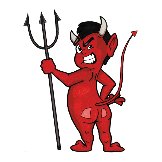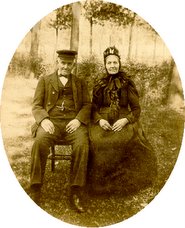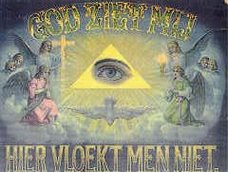Genealogy stands or falls with the careful and detailed analysis of primary sources. When one uses secondary sources one has to check back and verify with the primary sources. That is the overriding principle which a large majority of amateurs ignore.
At this moment in time my own ancestry chart comprises about 6000 individuals. That is not as impressive as it sounds, because there are lots of doubles : very often one cannot define exactly which one out of - for instance - five Joannes Timmermans, who lived in a given village at a given time, was a witness to a marriage, or a godfather.
But that's not the point. The point is that the part of primary research in my database is very limited : maybe 250 persons at the very most. Fortunately, I have been blessed with very reliable secondary sources and family (household) reconstructions which have been made by professional archivists, historians and dedicated amateurs. But even these people make mistakes, and typographical errors remain in the best of sources.
And these sources are copied, and copied ... and copied ... A short look at Geneanet and other websites proves the point.
But there are so many other uncontrollable and uncontrolled sources on various genealogical sites, including Geneanet. No sources or provenance are given ; still the data are dutifully copied by other genealogy hunters. The other day, a very reputable genealogist once more made the point in a Yahoo group.
And he wrote something which struck home. One could completely invent and publish a fictional genealogy (I must say that in my worst moments I have been tempted to try just that - fortunately, I never did) and one could be sure that within a short timespan that genealogy would be copied in scores of other genealogies on the web.
By the way, even in the Ancien Regime, upstarts who tried to get a title, or minor nobilty wanting to get ahead in the world, have been known to falsify their ancestry in order to "prove" that they descended from the most "noble" of families.
Primary sources are essential, but who can spare the time and the effort to read score upon score of registers written in bad church latin, in an almost illegible old script and published on completely used, scratched or faded microfilm ?
Caveat emptor, or something like that.
Subscribe to:
Post Comments (Atom)







2 comments:
That being stated, primary sources are not the end and do not give total certainty.
It is estimated that, even in historic times, up to 1 out of every 10 children was fathered by a man which was not the official spouse of the mother.
The official spouse was the official father ; the real blood father was never known, or disappeared into the mists of history.
The only blood line one can classify as almost certain is the all female line : from mother to mother !
Primary sources ARE certainly important, but even they must be backed up by corroborating proof from other sources. Remember, primary sources were created by people, who may have given the wrong information by mistake or on purpose, for their own reasons. It's often surprising the truths you find when you dig a little deeper into the records!
Stephanie at the Irish Genealogical Research blog
Post a Comment